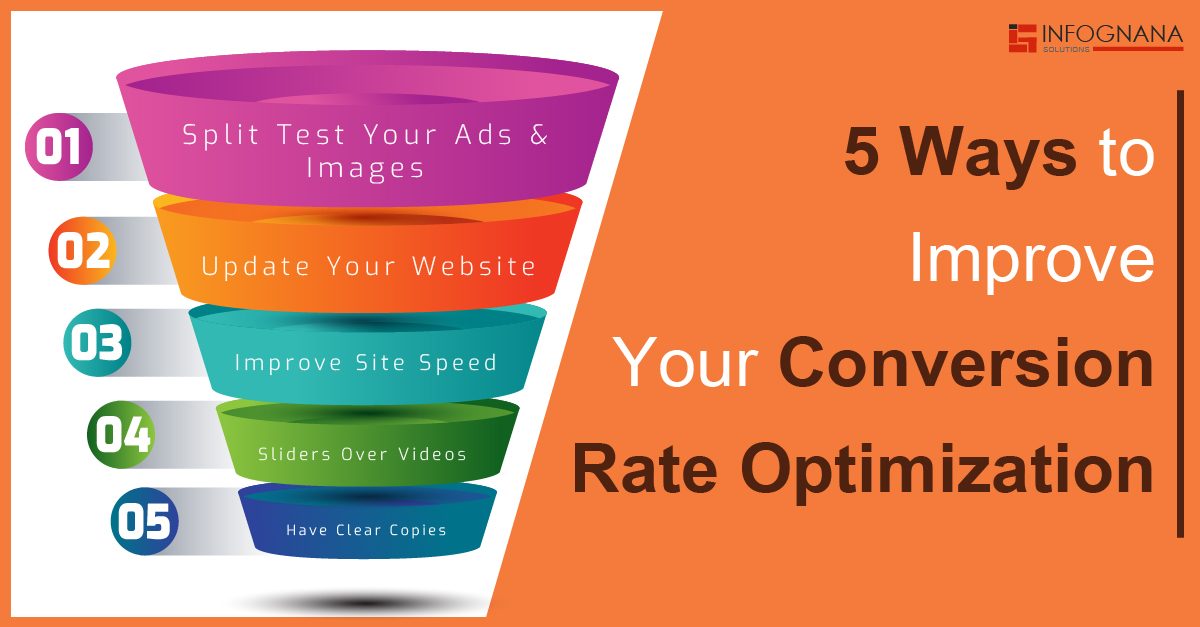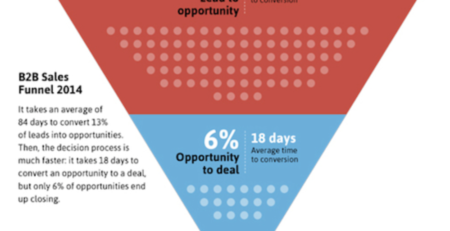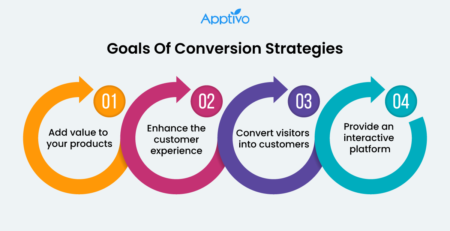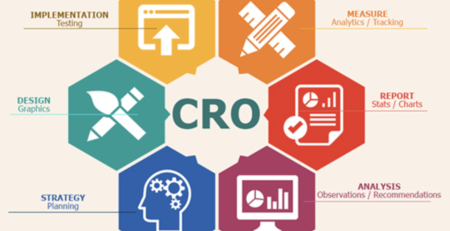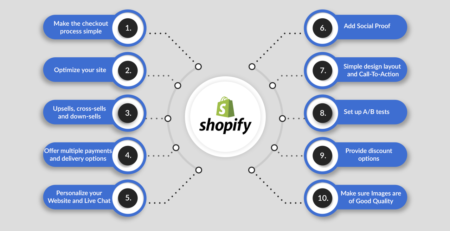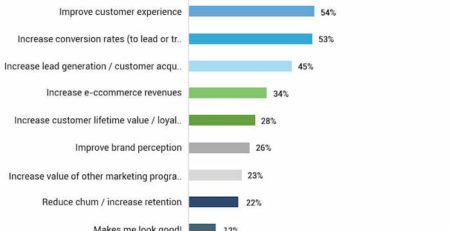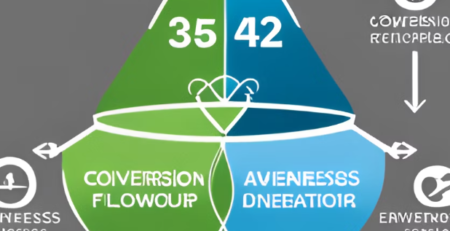How To Improve Conversion Rate Optimization?
Are you wondering how to improve conversion rate optimization? Well, you’ve come to the right place! In today’s digital world, where businesses need to stand out and attract customers, optimizing your conversion rate is key.
But, hold on a sec, what is conversion rate optimization? Simply put, it’s the process of improving the percentage of website visitors who take a desired action, such as making a purchase or filling out a form.
Now, you might be thinking, why should I care about conversion rate optimization? Good question! Improving your conversion rate can lead to more sales, higher revenue, and better return on investment for your digital marketing efforts.
So, if you’re ready to take your business to the next level and boost your online success, let’s dive into some practical strategies and tips to improve your conversion rate optimization. Get ready to see those numbers grow!
To improve your conversion rate optimization, follow these steps:
- Analyze your website’s performance and identify areas for improvement.
- Optimize your website’s design and layout to create a seamless user experience.
- Create compelling and persuasive content that resonates with your target audience.
- Add clear and prominent call-to-action buttons throughout your website.
- Implement A/B testing to continuously optimize your conversion rate.
Transform your website into a conversion powerhouse!
How to Improve Conversion Rate Optimization? – Maximizing Your Website’s Potential
When it comes to running a successful online business, conversion rate optimization plays a crucial role. It determines how effectively you can turn website visitors into paying customers. By implementing the right strategies and techniques, you can significantly boost your conversion rates and drive up your revenue. In this article, we will dive deep into the world of conversion rate optimization and explore seven key areas that can help you improve your website’s performance and maximize your potential for success.
Understanding Your Target Audience
One of the first steps to improving conversion rate optimization is gaining a deep understanding of your target audience. By identifying who your ideal customers are, their needs, preferences, and pain points, you can tailor your website’s content and design to effectively engage and convert them. Conduct thorough market research, analyze customer data, and utilize tools like Google Analytics to gain valuable insights. Create buyer personas and map out the customer journey to better understand their motivations and decision-making process.
With this knowledge, you can optimize your website’s user experience to cater to your audience’s specific needs. Craft compelling headlines and persuasive copy that speaks directly to your target customers. Use high-quality visuals that resonate with their preferences. And ensure seamless navigation and intuitive design to make their journey through your website effortless. By aligning your website with your audience’s expectations, you can significantly enhance your conversion rates.
Benefits of A/B Testing
A/B testing is a powerful technique that allows you to compare two versions of a webpage and determine which one performs better in terms of conversion rates. By systematically making small changes, such as altering the call-to-action button, adjusting the layout, or modifying the color scheme, you can identify which elements resonate best with your audience and lead to higher conversion rates. A/B testing provides valuable insights into user behavior and helps you make data-driven decisions.
Start by identifying various elements on your website that you believe can be optimized. Create two versions of the webpage, one serving as the control and the other as the variant. Split your website’s traffic evenly between the two versions and track their performance over a specific period. Analyze the data and determine which variation produces better results. Implement the changes that lead to improved conversion rates and continue experimenting to refine your website further.
The benefits of A/B testing are vast. It allows you to uncover opportunities for improvement, eliminate guesswork, and optimize your website based on real user data. By consistently testing and refining, you can significantly enhance your conversion rate optimization efforts and drive better business results.
Tailoring Landing Pages for Maximum Impact
Landing pages are specifically designed to convert visitors into leads or customers. They provide a focused and compelling message that aligns with a specific call-to-action. To improve conversion rate optimization, it’s essential to optimize your landing pages for maximum impact.
Start by ensuring a clear and compelling headline that immediately grabs visitors’ attention and communicates the value proposition. Craft persuasive and concise copy that conveys the benefits of your product or service. Use visually appealing elements, such as high-quality images or videos, to engage and captivate the audience. Design a prominent and enticing call-to-action that stands out and creates a sense of urgency.
Moreover, ensure that your landing pages are mobile-friendly, as an increasing number of users browse the internet on their smartphones and tablets. Optimize for fast loading times, as slow-loading pages can significantly impact conversion rates. Use customer testimonials, social proof, or case studies to build trust and credibility.
The Power of Personalization
Personalization is a game-changer when it comes to conversion rate optimization. By tailoring your website’s content, recommendations, and offers to individual visitors, you can greatly enhance their experience and increase the likelihood of conversion. Personalization adds value, relevance, and a sense of familiarity to the user journey, making visitors more inclined to take action.
Utilize technologies like artificial intelligence and machine learning to gather user data and create personalized experiences. Show personalized product recommendations based on previous browsing or purchase history. Implement dynamic content that reflects visitors’ preferences or demographics. Use personalized notifications or email campaigns to re-engage potential customers.
Personalization goes beyond simple name insertion. It’s about understanding your audience on a deeper level and adapting your website’s content and offers accordingly. By creating a tailored experience for each visitor, you can significantly improve your conversion rates and build long-lasting relationships with your customers.
Building Trust and Addressing Concerns
Trust is a crucial factor in conversion rate optimization. Visitors are more likely to convert into customers if they trust your brand, your products, and your website. Building trust starts with designing a professional and visually appealing website that reflects your brand’s values and credibility.
Include trust signals throughout your website, such as security badges, customer reviews, or social media testimonials. Offer transparent pricing and clear refund or return policies to address common concerns. Display recognizable logos of well-known companies you have worked with or certifications you have obtained. Provide comprehensive and easily accessible contact information to demonstrate that you are a legitimate business.
Furthermore, proactively address any potential objections or concerns visitors may have. Anticipate their questions and provide clear and compelling answers. Use FAQ sections or live chat support to assist and guide potential customers. By instilling trust and addressing concerns, you can significantly improve your conversion rates and build a loyal customer base.
Streamlining the Checkout Process
The checkout process is a crucial touchpoint where many potential customers abandon their purchase journey. To optimize conversion rates, it is essential to streamline and simplify the checkout process to minimize friction and maximize the likelihood of conversion.
Start by minimizing the number of steps required to complete a purchase. Use progress indicators to show users where they are in the process and how many steps are left. Offer guest checkout options to reduce barriers for first-time customers. Make it easy to edit or remove items from the cart without starting over. Optimize your forms by minimizing the number of required fields and using auto-fill features.
Integrate trusted and secure payment gateways to provide customers with peace of mind. Clearly display accepted payment methods and any applicable discounts or promotions. Offer clear shipping options and costs upfront to avoid surprise charges. Provide order confirmation and tracking information to keep customers informed throughout the process.
The Power of Social Proof
Social proof is a powerful psychological phenomenon that can significantly impact conversion rates. When potential customers see that others have had positive experiences with your brand or products, it instills confidence and encourages them to take action. Incorporating social proof into your conversion rate optimization strategy can yield impressive results.
Utilize customer testimonials, case studies, or success stories that highlight the positive experiences of your existing customers. Include reviews and ratings from trusted third-party review platforms. Implement social media feeds that showcase user-generated content or testimonials. Display social media follower counts or subscriber numbers to demonstrate your brand’s popularity and credibility. Showcasing real-life examples of how your products or services have benefited others can greatly influence potential customers’ buying decisions.
Creating a Culture of Continuous Optimization
– The Importance of Analytics and Data Tracking
– Source of Traffic Analysis
– Conversion Funnel Optimization
– Mobile Optimization Strategies
– Implementing Exit-Intent Popups
– Optimizing Call-to-Action Placement
– Utilizing Lead Magnets for Lead Generation
– Implementing Live Chat Support for Instant Assistance
– The Power of Remarketing Strategies
– Harnessing the Potential of Email Marketing
– Strategies for Effective A/B Testing
– Utilizing Heatmaps for User Behavior Analysis
– The Impact of Page Load Speed on Conversion Rates
– The Role of Neuromarketing in Conversion Rate Optimization
– Creating Persuasive Product Descriptions
– Harnessing the Power of Urgency and Scarcity Techniques
– The Art of Effective Pricing Strategies
– The Impact of Color Psychology on Conversion Rates
– Harnessing the Power of Video Marketing for Increased Conversions
In conclusion, improving conversion rate optimization requires a strategic and holistic approach. By understanding your target audience, optimizing landing pages, personalizing the user experience, building trust, streamlining the checkout process, leveraging social proof, and continuously optimizing your website, you can significantly increase your conversion rates and drive better business results. Embrace data-driven decision-making, experiment with different strategies, and always strive for improvement. Remember, optimizing your conversion rates is an ongoing process that requires dedication and continuous effort. Implementing the right techniques and keeping up with the latest trends and best practices will ensure that you stay ahead of the competition and maximize your website’s potential.
Key Takeaways: How to Improve Conversion Rate Optimization?
- Make your website load faster to reduce bounce rates.
- Create clear and compelling call-to-action buttons.
- Optimize your website for mobile devices.
- Use persuasive and customer-focused language in your copy.
- Use A/B testing to continuously improve your conversion rates.
Frequently Asked Questions
Looking to improve your conversion rate optimization? Check out these frequently asked questions to gain valuable insights and guidance.
1. What is conversion rate optimization and why is it important?
Conversion rate optimization (CRO) refers to the process of optimizing your website or landing page to increase the percentage of visitors who take a desired action, such as making a purchase or filling out a form. It is important because it directly impacts your business’s bottom line by maximizing the value from existing traffic.
CRO allows you to understand your audience better, identify areas of improvement, and make data-driven changes to enhance user experience, increase customer engagement, and ultimately boost conversions and revenue.
2. How can I analyze and understand my website’s conversion data?
Start by setting up conversion tracking using tools like Google Analytics. This will enable you to track and measure the performance of your website’s conversion funnel, including metrics such as conversion rate, bounce rate, and average time on page.
In addition, utilize heatmaps and user behavior analytics tools to gain insights into how visitors are interacting with your website. These tools can provide visual representations of where users are clicking, scrolling, or dropping off, allowing you to pinpoint areas that may require optimization.
3. What are some effective strategies to improve conversion rate optimization?
One effective strategy is to optimize your website’s landing page design. Ensure it is visually appealing, easy to navigate, and has a clear call-to-action. Use persuasive copy and compelling visuals to engage visitors and encourage them to convert.
Another strategy is to conduct A/B testing. Test different elements, such as headlines, images, button colors, and layouts to see which versions lead to higher conversion rates. Continuously iterate and refine your website based on the results of these tests.
4. How can I make my website more mobile-friendly for better conversion rates?
With the increasing use of smartphones, optimizing your website for mobile devices is crucial. Ensure your website is responsive and adapts seamlessly to different screen sizes. Simplify navigation, make buttons and forms easily clickable, and minimize page load times to provide a smooth user experience on mobile devices.
Consider implementing mobile-specific features, such as click-to-call buttons or mobile payment options, to eliminate friction and streamline the conversion process for mobile users.
5. How important is personalization in improving conversion rates?
Personalization plays a significant role in improving conversion rates. By tailoring your website content, offers, and recommendations to match individual user preferences and behaviors, you can create a more personalized and relevant experience. This increases the likelihood of visitors converting into customers.
Utilize customer segmentation and targeted messaging. Leverage data from past interactions, such as browsing history or previous purchases, to deliver personalized recommendations or offers that resonate with each visitor. This personalized approach can significantly enhance conversion rates and customer satisfaction.
How To 4X Your Shopify Conversion Rate in 2023
Summary
Improving conversion rate optimization is important for making your website more effective. To do this, analyze and understand your target audience. Then, create a clear and compelling call-to-action that stands out. Also, make sure your website is easy to navigate and loads quickly. Test different elements on your site, such as headlines and images, to see what works best. Finally, regularly track and analyze your conversion rates to continue improving.
Remember, conversion rate optimization is all about making your website more user-friendly and persuasive. By implementing these strategies, you can boost your conversions and achieve your goals.

